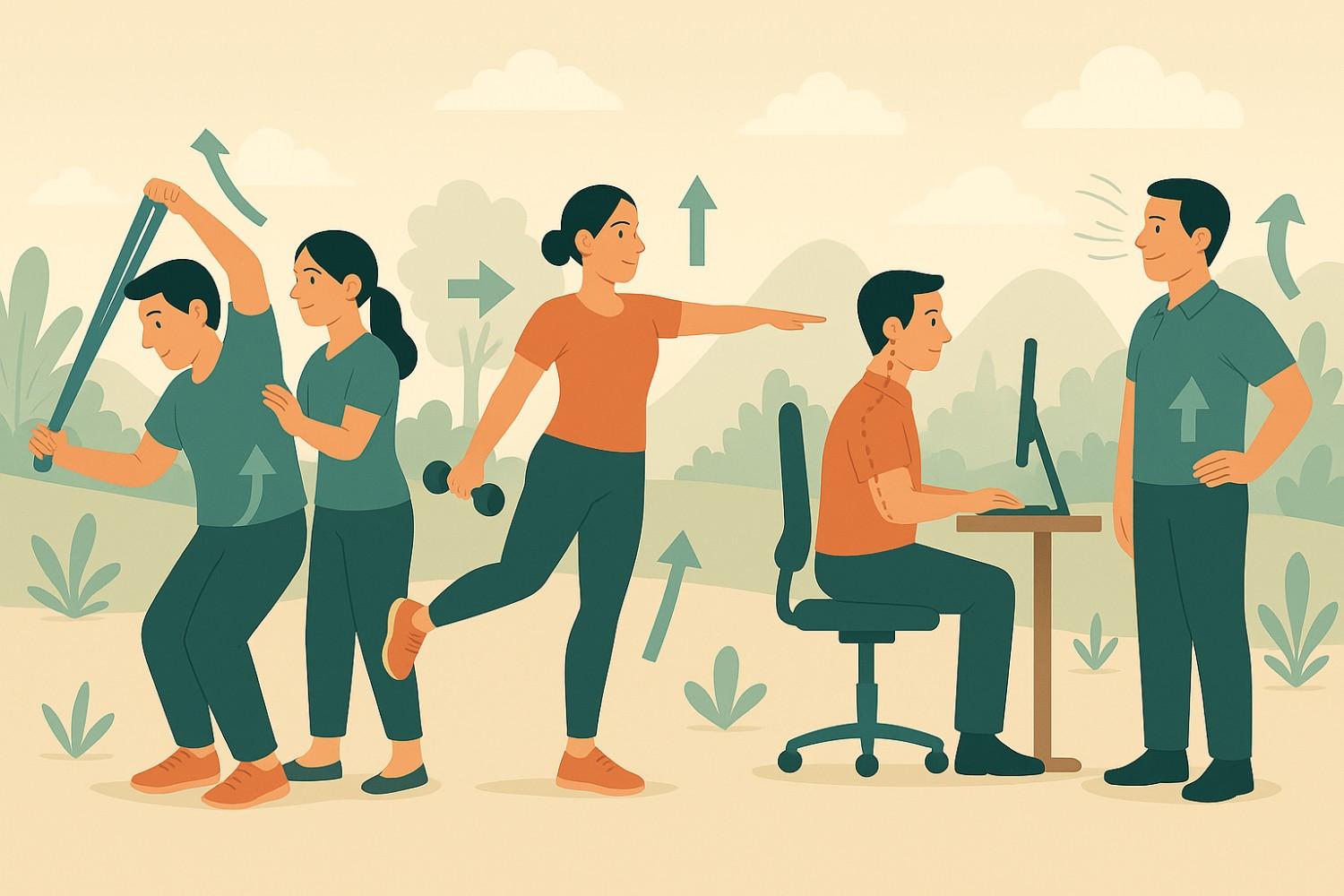Introduction
When we think of posture, we often picture a straight back and aligned shoulders. But good posture is more than just standing tall—it’s the foundation for how our body functions. Poor posture doesn’t just affect your back; it can lead to neck pain, headaches, shoulder stiffness, reduced lung capacity, digestive issues, and even poor concentration. In the digital age, where screens dominate our daily life, postural problems are more common—and more overlooked—than ever.
Fortunately, physiotherapy offers a holistic, evidence-based approach to identify and correct posture-related dysfunctions. A physiotherapist not only helps improve alignment and muscle balance but also empowers you with the knowledge and tools to maintain long-term physical health. In this blog, we’ll explore how posture impacts your overall well-being and how physiotherapy can help fix much more than just a slouch. Ready to straighten things out? Let’s dive in.
✅ 1. Why Posture Matters More Than You Think
Posture is the position in which you hold your body while sitting, standing, or moving. Proper posture minimizes strain on muscles, joints, and ligaments, allowing the body to work efficiently. When posture is compromised—due to long hours at a desk, improper lifting, or sedentary habits—it leads to a chain reaction of dysfunctions:
- Muscle Imbalances: Some muscles become overactive and tight, while others weaken, leading to compensatory patterns.
- Joint Misalignment: Poor posture places stress on joints, especially the spine, hips, and shoulders.
- Circulation and Organ Function: Slouching compresses internal organs, affecting breathing, digestion, and even circulation.
- Mental Health: Studies show a strong link between upright posture and improved mood, energy, and focus.
✅ 2. Signs Your Posture Needs Help
Not sure if you have postural issues? Here are some red flags:
- Frequent neck and shoulder pain
- Tension headaches
- Rounded shoulders or forward head posture
- Persistent low back pain
- Fatigue even after minimal activity
- Uneven hips or foot arches
- Difficulty maintaining balance or coordination
These subtle signs often go unnoticed until pain becomes chronic. This is where physiotherapy can make a real difference.
✅ 3. How Physiotherapy Assesses Posture Holistically
Physiotherapists perform a detailed postural assessment that goes beyond just observing your back. It includes:
- Static and Dynamic Analysis: Evaluating posture while sitting, standing, walking, and performing tasks.
- Range of Motion Testing: Checking flexibility and stiffness in key joints (neck, shoulders, hips, spine).
- Muscle Strength Testing: Identifying weak or overactive muscles that affect posture.
- Functional Movement Screening: Observing how your body moves during everyday tasks.
Using these insights, a tailored treatment plan is developed that targets not just symptoms, but the root cause.
✅ 4. Physiotherapy Techniques for Posture Correction
🔹 Stretching Tight Muscles
Physiotherapists use active and passive stretching techniques to release commonly tight muscles like:
- Pectorals (chest)
- Upper trapezius
- Levator scapulae
- Hip flexors
- Hamstrings
These helps relieve tension and create space for better movement.
🔹 Strengthening Weak Postural Muscles
Key stabilizing muscles often need activation, such as:
- Deep neck flexors
- Rhomboids and middle/lower trapezius
- Serratus anterior
- Core and gluteal muscles
Exercises like chin tucks, scapular squeezes, and planks are commonly prescribed.
🔹 Manual Therapy & Mobilization
Hands-on techniques improve joint mobility and relieve muscle knots, especially in the cervical and thoracic spine.
🔹 Postural Education and Ergonomics
Understanding proper workstation setup, correct lifting techniques, and posture awareness throughout daily activities is crucial for long-term success.
🔹 Taping & Bracing (if needed)
Kinesiology taping can offer gentle support and postural cueing, especially during the early correction phase.
✅ 5. Posture Affects More Than Just Pain
Physiotherapy-led posture correction doesn’t just alleviate physical pain—it impacts multiple areas of life:
- Breathing Efficiency: Upright posture opens the chest cavity, improving lung function.
- Digestive Health: Less compression on abdominal organs helps reduce bloating and indigestion.
- Circulation: Proper alignment allows for smoother blood flow and reduced swelling in extremities.
- Mental Clarity & Mood: Improved posture has been linked to enhanced confidence, alertness, and even reduced symptoms of anxiety and depression.
- Productivity: Better posture reduces fatigue, allowing for increased focus at work or study.
✅ 6. Prevention is Better Than Cure
You don’t have to wait for pain to start. Posture correction can be preventive—especially for students, IT professionals, drivers, and others who sit for long hours. A physiotherapist can guide you through a regular posture maintenance plan involving:
- Short stretch breaks every 30–45 minutes
- Daily strengthening exercises
- Ergonomic workspace setup
- Awareness of posture in sleeping, driving, and phone use
Conclusion
Good posture is the silent backbone of physical health—and correcting it does far more than eliminate back pain. It enhances mobility, boosts internal organ function, reduces fatigue, and even uplifts mental well-being. Through targeted assessment, personalized exercise programs, and hands-on techniques, physiotherapy offers an effective and lasting solution to poor posture.
Whether you’re battling chronic pain or want to prevent future issues, don’t underestimate the power of alignment. Physiotherapy helps you not just look upright—but feel your absolute best from the inside out. So why wait until it hurts? Stand taller, breathe better, and live stronger—book a session with your physiotherapist today.
– Dr. Aprajeeta Chouhan, Assistant Professor
Faculty Of Physiotherapy, Madhav University

